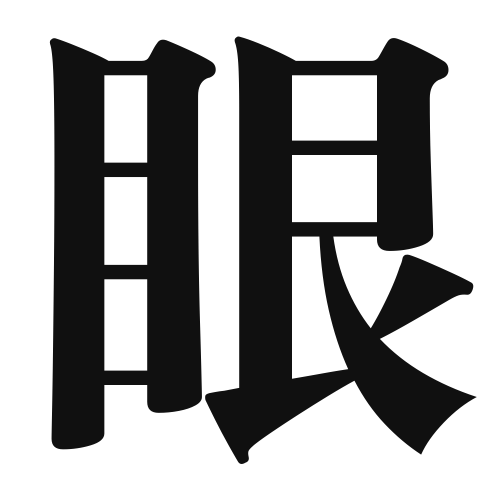1. Overview of Meaning
The kanji “眼” (pronounced “gan” or “me”) means “eye.” It refers to the organ of sight and can also symbolize perception or insight in a broader sense.
2. Formation and Radical
The kanji “眼” is a compound character that combines elements to convey its meaning. It is made up of the radical “目” (meaning “eye”) and the phonetic component “艮,” which contributes to its pronunciation.
The radical “目” is commonly associated with vision-related characters, making it a key component in understanding the meaning of “眼.”
3. Examples of Usage
Some commonly used words and phrases that include “眼” are:
- 眼科 (がんか, “ophthalmology”)
- 眼鏡 (めがね, “glasses”)
- 眼球 (がんきゅう, “eyeball”)
In everyday conversation, you might hear:
「彼は目が良い。」(かれはめがよい, “He has good eyesight.”)
4. Synonyms and Antonyms
Similar kanji with related meanings include:
- 視 (し, “sight”) – refers more to the act of seeing.
- 瞳 (ひとみ, “pupil” or “iris”) – specifically refers to the colored part of the eye.
Antonyms or contrasting kanji include:
- 盲 (もう, “blind”) – indicating a lack of sight.
5. Cultural and Historical Background
The kanji “眼” has significant cultural relevance in Japan. It is often associated with wisdom and insight, as seen in various proverbs and idioms.
For example, the saying 「目は心の窓」(めはこころのまど, “The eyes are the windows to the soul”) emphasizes the connection between one’s eyes and their inner feelings.
